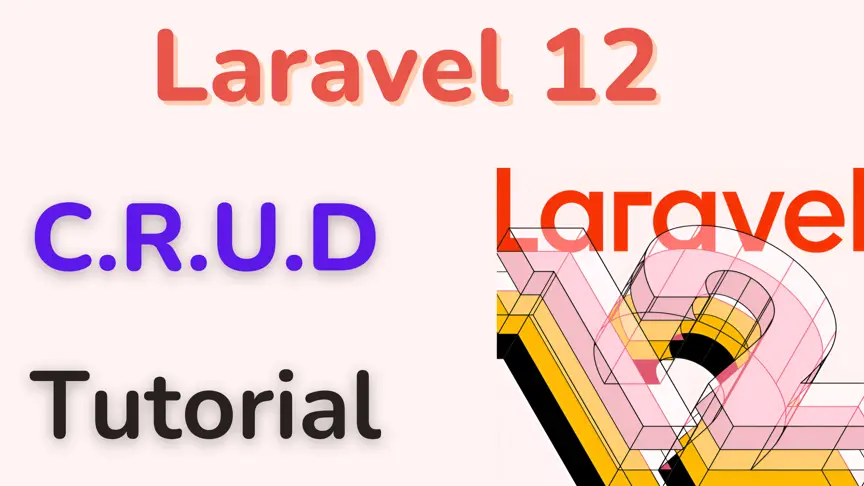Mastering Laravel 12 Collections: A Comprehensive Guide

Kritim Yantra
Apr 01, 2025
Laravel Collections are one of the most powerful features of the framework, providing a fluent and convenient way to work with arrays of data. Whether you're dealing with database query results or manipulating arrays, Laravel Collections offer a wide range of methods to simplify complex operations.
In this blog post, we'll dive deep into Laravel 12 Collections, covering everything from basic usage to advanced techniques. By the end, you'll have a solid understanding of how to leverage Collections effectively in your Laravel applications.
Table of Contents
- What Are Laravel Collections?
- Creating Collections
- Basic Collection Methods
- Filtering and Sorting Data
- Transforming Collections
- Aggregating Data
- Chunking and Grouping
- Lazy Collections for Large Datasets
- Custom Collection Macros
- Performance Considerations
- Conclusion
1. What Are Laravel Collections?
A Collection in Laravel is a wrapper around an array that provides a fluent, chainable interface for performing common array operations. Collections are inspired by functional programming paradigms and allow you to write cleaner, more expressive code.
Key Benefits of Collections
- Method Chaining: Perform multiple operations in a single, readable statement.
- Immutable Operations: Most methods return a new Collection instead of modifying the original.
- Helper Methods: Built-in methods for filtering, sorting, transforming, and aggregating data.
- Lazy Evaluation: For handling large datasets efficiently (using Lazy Collections).
2. Creating Collections
You can create a Collection in several ways:
From an Array
use Illuminate\Support\Collection;
$collection = new Collection([1, 2, 3, 4, 5]);
Or using the collect() helper:
$collection = collect([1, 2, 3, 4, 5]);
From Eloquent Query Results
Eloquent queries return Collections by default:
$users = User::all(); // Returns a Collection of User models
From JSON Data
$jsonData = '{"name": "John", "age": 30}';
$collection = collect(json_decode($jsonData, true));
3. Basic Collection Methods
all() – Get the Underlying Array
$collection = collect([1, 2, 3]);
$array = $collection->all(); // [1, 2, 3]
count() – Get the Number of Items
$count = $collection->count(); // 3
first() and last() – Get First/Last Element
$first = $collection->first(); // 1
$last = $collection->last(); // 3
get() – Retrieve an Item by Key
$collection = collect(['name' => 'John', 'age' => 30]);
$name = $collection->get('name'); // 'John'
has() – Check if Key Exists
if ($collection->has('age')) {
echo "Age exists!";
}
4. Filtering and Sorting Data
filter() – Keep Items Based on Condition
$filtered = $collection->filter(function ($value, $key) {
return $value > 2;
});
// Result: [3, 4, 5]
reject() – Remove Items Based on Condition
$rejected = $collection->reject(function ($value, $key) {
return $value <= 2;
});
// Result: [3, 4, 5]
sort() – Sort Items
$sorted = $collection->sort();
// Ascending order
sortBy() – Sort by a Key
$users = collect([
['name' => 'John', 'age' => 30],
['name' => 'Jane', 'age' => 25],
]);
$sortedByAge = $users->sortBy('age');
// Jane (25), John (30)
5. Transforming Collections
map() – Modify Each Item
$multiplied = $collection->map(function ($item) {
return $item * 2;
});
// [2, 4, 6, 8, 10]
pluck() – Extract a Key’s Value
$names = $users->pluck('name');
// ['John', 'Jane']
flatten() – Convert Nested Arrays to Flat
$nested = collect([[1, 2], [3, 4]]);
$flattened = $nested->flatten();
// [1, 2, 3, 4]
6. Aggregating Data
sum() – Calculate Sum
$total = $collection->sum(); // 15
avg() – Calculate Average
$average = $collection->avg(); // 3
min() and max() – Find Extremes
$min = $collection->min(); // 1
$max = $collection->max(); // 5
groupBy() – Group Items by Key
$grouped = $users->groupBy('age');
// Groups users by their age
7. Chunking and Grouping
chunk() – Split into Smaller Collections
$chunks = $collection->chunk(2);
// [[1, 2], [3, 4], [5]]
each() – Loop Through Items
$collection->each(function ($item) {
echo $item;
});
8. Lazy Collections for Large Datasets
For memory efficiency with large datasets, Laravel provides Lazy Collections:
use Illuminate\Support\LazyCollection;
LazyCollection::make(function () {
$file = fopen('large-file.txt', 'r');
while ($line = fgets($file)) {
yield $line;
}
})->chunk(1000)->each(function ($lines) {
// Process 1000 lines at a time
});
9. Custom Collection Macros
You can extend Collections with custom methods:
use Illuminate\Support\Collection;
Collection::macro('toUpper', function () {
return $this->map(function ($item) {
return strtoupper($item);
});
});
$collection = collect(['a', 'b', 'c']);
$upper = $collection->toUpper(); // ['A', 'B', 'C']
10. Performance Considerations
- Avoid Nested Loops: Use
keyBy(),groupBy(), orwhere()for better performance. - Use Lazy Collections for large datasets.
- Cache Results if the same Collection is reused.
11. Conclusion
Laravel Collections provide an elegant and efficient way to manipulate data. Whether you're filtering, sorting, transforming, or aggregating, Collections offer a clean and expressive syntax.
By mastering Collections, you can write more readable and maintainable Laravel code. Start applying these techniques in your projects today!
Happy coding! 🚀
Comments
No comments yet. Be the first to comment!
Please log in to post a comment:
Sign in with GoogleRelated Posts
 Kritim Yantra
Kritim Yantra

